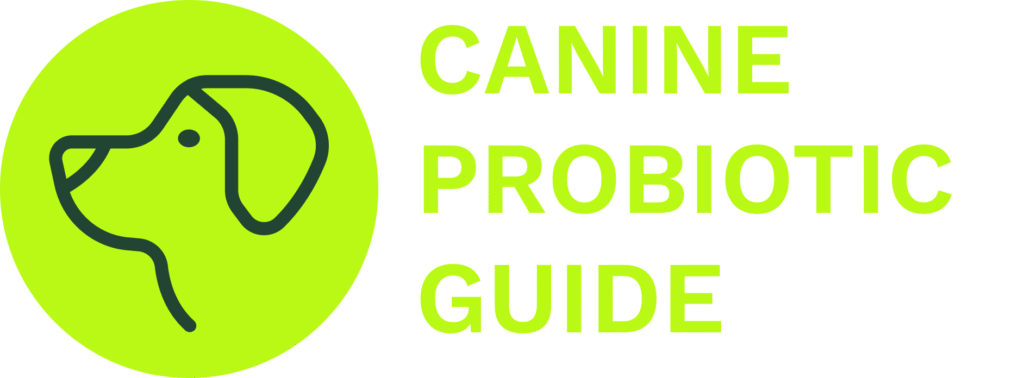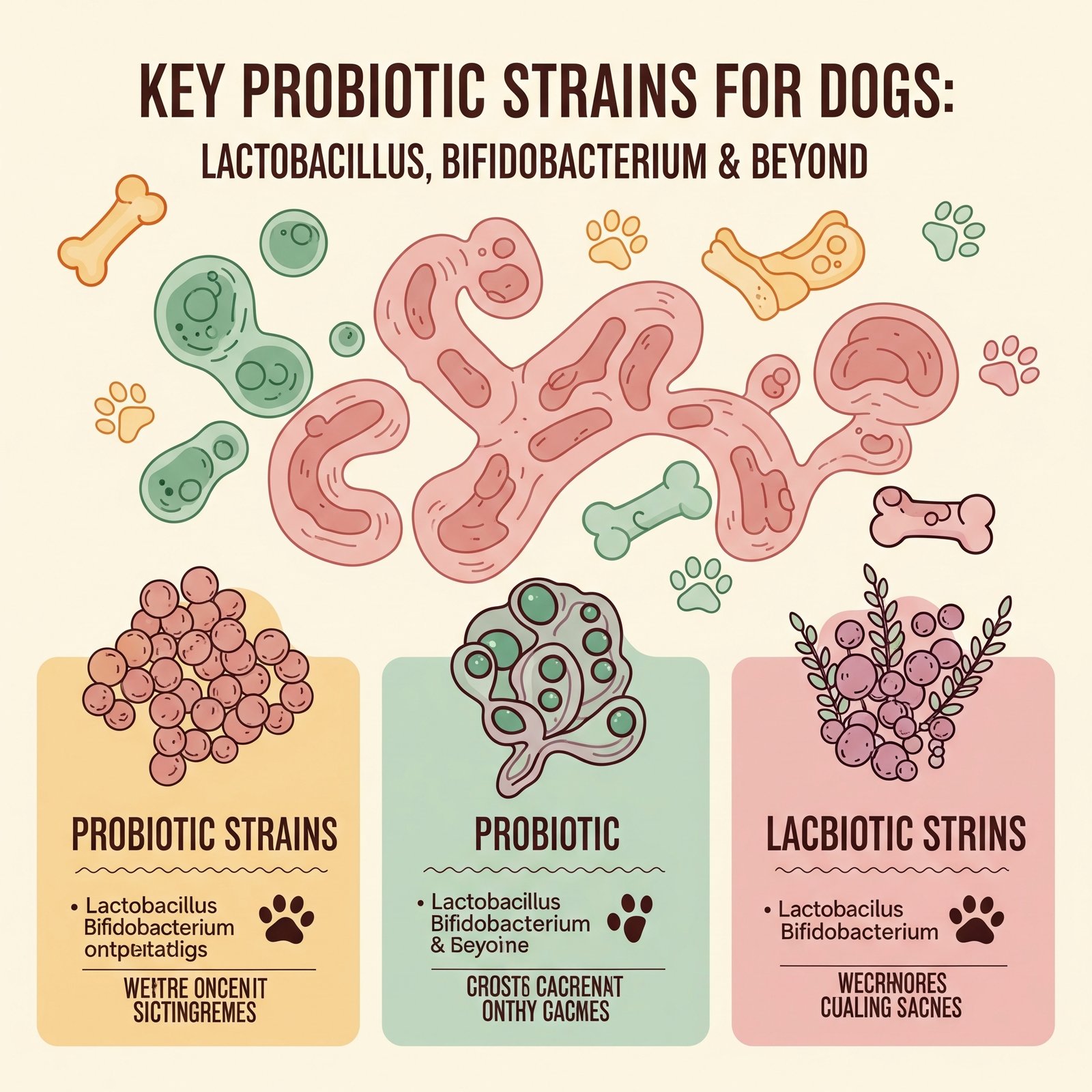Ensuring optimal gut health is vital to your dog’s overall well-being. This deep dive examines the most studied probiotic strains used in canine nutrition, how they work, and which clinical benefits you can expect when incorporating them into your dog’s diet.
Introduction
The canine gastrointestinal (GI) tract hosts trillions of microorganisms forming a balanced microbiome that aids digestion, nutrient absorption, immune regulation, and even behavior. Disruptions—from antibiotics, dietary changes, stress, or age—can trigger dysbiosis, leading to diarrhea, allergies, anxiety, and chronic enteropathies. Probiotic supplementation offers a targeted approach to restore microbial equilibrium by introducing beneficial live microbes into the gut.
1. Lactobacillus Species
Lactobacilli are lactic-acid bacteria prominent in healthy dog intestines. They produce lactic acid to inhibit pathogens and support barrier integrity.
- Lactobacillus acidophilus – Mechanism: Enhances sodium absorption via Na⁺/H⁺ exchanger modulation; produces antimicrobial compounds (e.g., bacteriocins) to suppress harmful bacteria. Benefits: Antidiarrheal effects; strengthens mucosal immunity; increases short-chain fatty acid (SCFA) producers for gut barrier support.
- Lactobacillus plantarum (AMT4, AMT14) – Mechanism: Adheres to mucosal surfaces, competitively excluding pathogens; modulates tight junction protein expression. Benefits: Rapid reduction of neonatal puppy diarrhea; improved weight gain in early life stages.
- Other Lactobacillus Strains – L. rhamnosus and L. casei have shown reductions in stress-induced GI upset and mitigation of antibiotic-associated diarrhea in adult dogs.
2. Bifidobacterium Species
Bifidobacteria colonize the colon, ferment dietary fibers into SCFAs (e.g., butyrate), nourishing colonocytes and dampening inflammation.
- Bifidobacterium animalis (AMT30) – Mechanism: Produces acetic and lactic acids to lower luminal pH, deterring pathogens; enhances mucosal IgA responses. Benefits: Decreases severity and duration of gastroenteritis in puppies; fosters a more resilient gut barrier.
- Bifidobacterium longum and B. breve – Studies indicate reductions in allergic dermatitis severity by modulating systemic IgE levels and inflammatory cytokines.
3. Enterococcus faecium
A robust lactic-acid bacterium with documented safety and efficacy in dogs.
- E. faecium NCIMB 10415 / EE3 – Mechanism: Competes with pathogens for adhesion sites; secretes bacteriocins; modulates lipid metabolism. Benefits: Shortens diarrhea episodes; lowers fecal Staphylococci and Pseudomonas counts; reduces serum cholesterol in elderly dogs.
4. Bacillus Species
Spore-forming Bacilli withstand heat and stomach acid, making them ideal for kibble inclusion.
- Bacillus subtilis and B. coagulans – Mechanism: Germinate in the small intestine to release enzymes and antimicrobial peptides; support Th1/Th2 balance. Benefits: Improve stool consistency; reduce inflammatory markers in chronic enteropathy models.
5. Saccharomyces boulardii
A non-pathogenic yeast probiotic with unique modes of action.
- S. boulardii – Mechanism: Secretes proteases that degrade bacterial toxins; stimulates IgA production; promotes tight junction integrity. Benefits: Shortens the course of antibiotic-associated diarrhea; enhances mucosal immunity during GI infections.
6. Faecalibacterium prausnitzii
Not a direct supplement but a keystone SCFA-producing genus enriched by certain probiotics.
- Mechanism: Produces butyrate, fueling colonocytes and reinforcing mucosal barrier; exhibits anti-inflammatory properties via IL-10 induction.
- Benefits: Increased abundance correlates with remission in canine inflammatory bowel disease (IBD) models after probiotic interventions.
Selecting the Right Strains
- Species-Specific Formulations: Choose products labeled for canine use—human strains may not colonize or confer the same benefits.
- Multi-Strain vs. Single-Strain: Multi-strain blends target diverse GI niches but ensure each strain has proven canine research.
- CFU Count & Viability: Aim for at least 1–5 billion CFU/day; look for guaranteed CFU through shelf life.
- Delivery Format: Chews and powders can offer higher viable counts; enteric-coated capsules protect sensitive strains.
Practical Recommendations
- During Antibiotic Therapy: Start probiotics 12 hours after the antibiotic dose to minimize inactivation and continue for ≥2 weeks post-therapy.
- For Chronic GI Conditions: Use products containing Lactobacillus plantarum, B. animalis, and Enterococcus faecium at therapeutic dosages (e.g., 1×10⁹ CFU per strain).
- Enhancing Skin & Immune Health: Supplement strains shown to modulate systemic immunity (e.g., B. longum, L. rhamnosus) over 8–12 weeks to observe dermatologic improvements.
Conclusion
Harnessing specific probiotic strains empowers you to tailor gut-health strategies for your dog—from puppyhood through senior years. Lactobacillus and Bifidobacterium remain cornerstone genera, while emerging candidates like Faecalibacterium prausnitzii and Bacillus spp. expand the toolkit for managing enteropathies, immune disorders, and even behavioral issues. By selecting science-backed, canine-formulated probiotics, you can restore microbial balance, enhance digestive resilience, and support lifelong canine health.





